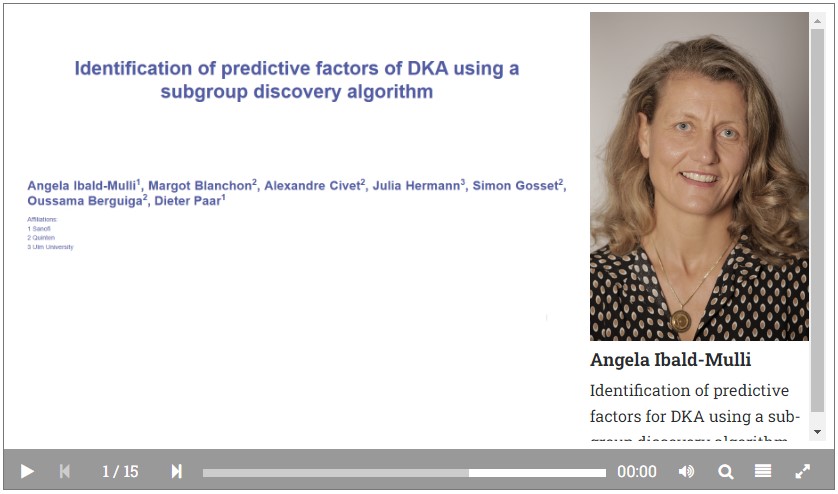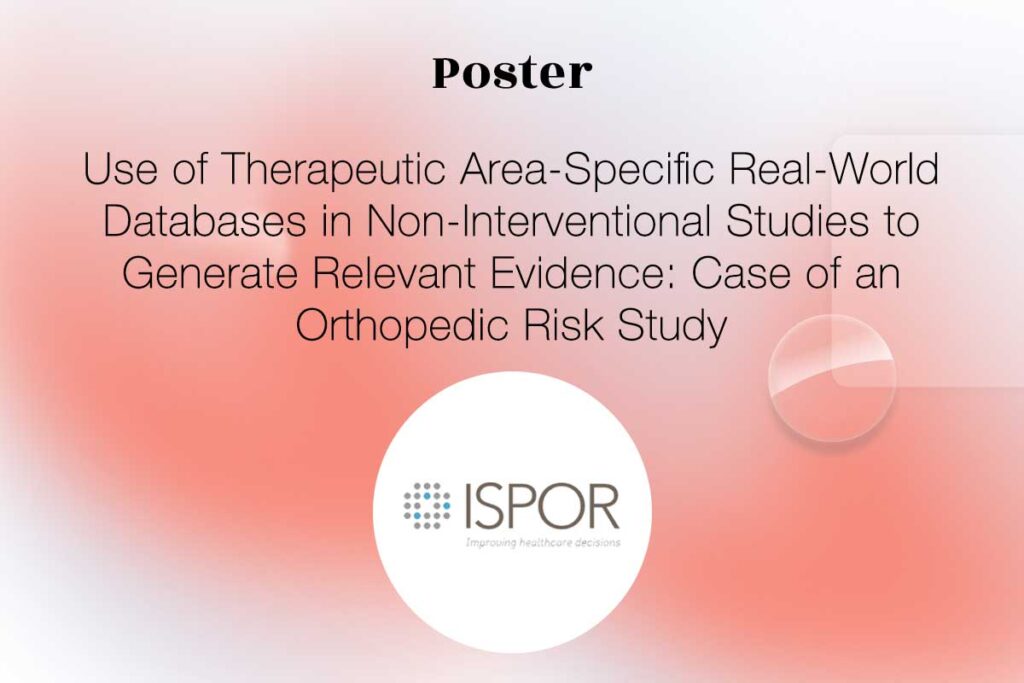Authors: A. Ibald-Mulli, M. Blanchon, J. Hermann, A. Civet, S. Gosset, O. Berguiga, D. Paar
Date: September 2019
CONFERENCE/VALUE IN HEALTH INFO:
233 SPRING ST, NEW YORK, NY 10013 USA: SPRINGER.
DIABETOLOGIA, Volume 62, pp. S60-S61 (2019)
Abstract
Background and aims:
Diabetic ketoacidosis (DKA) is a serious complication of type 1 diabetes (T1D), which is difficult to diagnose due to variability in symptoms. Better knowledge of factors associated with an increased risk of DKA will inform physicians for the management of their patients. The objective of the present work is to identify predictive factors for DKA in T1D.
Materials and methods:
A descriptive analysis of the Diabetes Prospective Follow-up Registry (DPV) including 126,235 German and Austrian patients with T1D was conducted. Advanced analytics using QFinder®a supervised non-parametric proprietary subgroup discovery algorithm was performed. QFinder® explored all combinations of explanatory variables to identify those highly associated with the variable of interest DKA, defined as pH < 7.3. The output was a set of patient profiles defined by combinations of variables and thresholds that maximizes a set of statistic indicators, such as odds ratios and p-values adjusted for confounding factors and multiple testing (Benjamini Hochberg correction). The size of the dataset allowed to perform learning on half of the data and to validate results on a quarter of the data. As a last step clinically relevant patient profiles were tested on the remaining quarter of the data.
Results:
Descriptive statistics of DKA versus non-DKA population are consistent with clinical expectations and results obtained by conventional statistical methods. DKA patients are younger, have an earlier age at diabetes onset and a shorter disease duration versus non-DKA patients. They more often show limited physical activity and have a higher number of medical visits. Eleven profiles shown in the table below were identified: Table 1 – Statistic indicators of selected profiles with higher risk of DKA Patients with low BMI (adjusted for age) and those with DKA at baseline were at higher risk for recurrent DKA, which is consistent with the literature. There was a significantly increased risk of DKA in children from 6 to 15 years of age and patients with HbA1c ≥ 8.87, as well as young patients (< 15 years old) with limited time on continuous glucose monitoring system. Patients with nephrosis (increased microalbuminuria) or hypoglycemic coma had an increased risk of DKA. Patients with autoimmune thyroiditis also had an increased risk of DKA. The insulin regimen did not appear to be associated with DKA risk.
Conclusion:
This subgroup detection algorithm confirmed known risk profiles identified by conventional statistical methods and allowed the generation of new hypotheses and thresholds that will be investigated further to better understand the underlying triggers of DKA in type 1 patients. The robustness of these results from the reapplication on different independent data sets supports confidence in these findings









